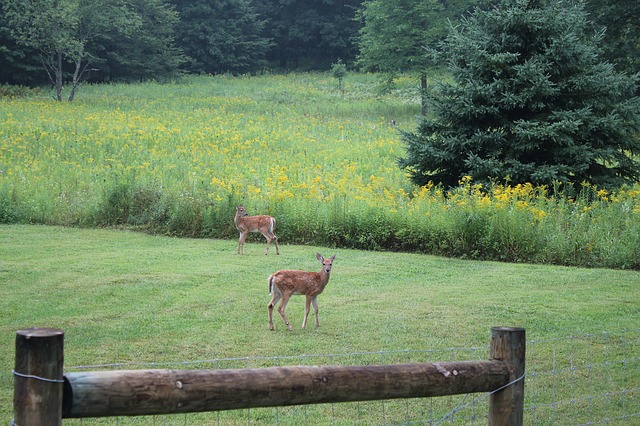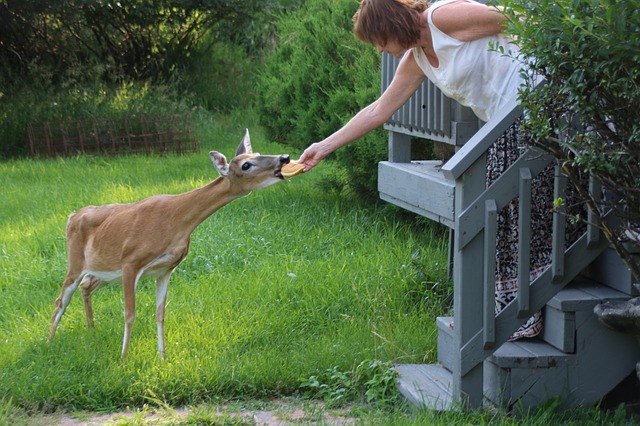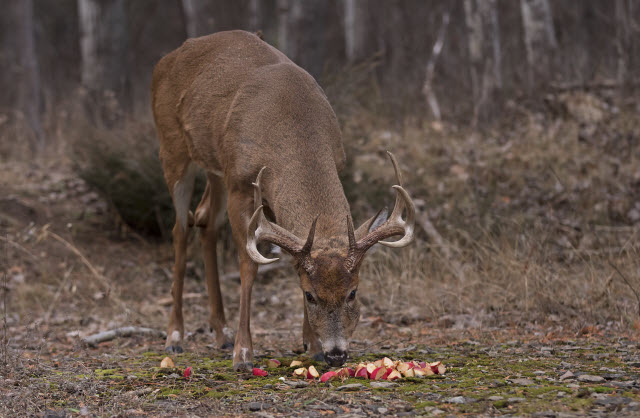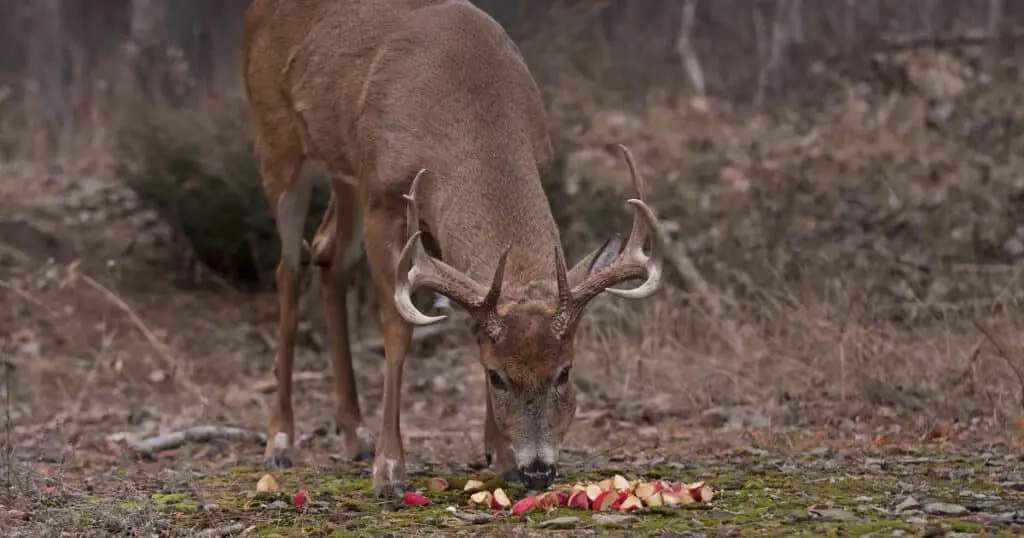If you live in deer territory, there is no doubt that these graceful woodland creatures will pay you a visit. Wild deer traverse the lands freely, and we humans like to supplement their diets by leaving some food for them. There are inexpensive ways to feed deer, so that your money and food don’t go to waste if it ends up being left untouched.
The Dietary Needs of the Wild Deer
Wild deer have a wide array of natural food in their environment. Deer are herbivores and mostly nocturnal grazers. They will eat most types of plants such as leaves, grass, nuts, fruit, corn, and fungi.
The food they eat is often seasonal and their bodies change according to the weather to adjust to the kinds of food available to them. The deer digestive system is complex, and adaptable.

You can supplement food sources for deer as well to help them if the location you are in has scarce resources.
Tips for Feeding Deer
- Make sure that it is legal to feed deer in your state or country. In the United States, it is illegal to feed or bait deer. Different states have different laws regarding feeding deer, so make sure you know them.
- Deer bodies are able to process food differently as the season changes. Their nutritional needs throughout the year keep changing. This happens due to the availability of food. Their dietary needs change based on these changes.
- You can feed deer by creating a food pile, using feeders to regulate the feed better, or leaving small patches in the forest.
An Inexpensive Way to Feed Deer
Equipped with tips on feeding deer and assuming that it is legal in your state, let’s look at your options. Supplements are alright to use, but they will be costly.

Since deer are not very picky eaters, it is easy for you to choose cheaper alternatives.
Growing some of the plants that they eat as part of their normal diet is an inexpensive way to feed deer.
Fruits and Nuts
If you have fruit growing around you, you could collect the fallen ones and relocate them to one of the feeding locations. This requires no money at all. Most of the fallen fruit would be otherwise wasted on the ground.
It is well known that deer love fruit. The fruit you collect can be scattered in the stockpile area and the deer will thank you for it.

Another great idea would be to plant fruit trees or berry bushes near deer territory.
The same thing would work if you find nuts in your area. Simply collect as many as you can find and relocate them like you would for the fruit. Unlike fruit, nuts can keep longer and deer love munching on acorns and walnuts.
Scatter Clover Seeds
You can purchase clover seeds and scatter them around on the land. It is a very cheap way of making sure that there is always something around for the deer to eat.
While they naturally will munch on things like wild soybeans and other plants, you provide more food for them this way without having to plant a large-scale food plot for your local deer herd.
Clover seeds are not very expensive and you can always try it out in a small area before committing to buying them in bulk. Clover is vigorous and low maintenance, so it is as easy as scattering them on land, and just let them be.
Mineral Blocks
Minerals are essential for deer health. You can purchase mineral blocks or salt licks specifically for deer and leave some on a feeder around your land.
Salt is an extremely cheap commodity and it is also a very easy thing to find. You can also mix nuts and other foods around the feeder.
Making Your Own Inexpensive Deer Feed
Sometimes, buying deer feed can turn out to be expensive. So, why not make your own?
Oats, corn, nuts, and dried fruits are a great combination. You can buy most of these items in bulk in supermarkets and online which will help reduce costs.
Mix them up and bring them to the stockpile or the feeder.
Feeding deer does not have to be expensive. You do not have to break the bank by purchasing expensive deer feed. Just look around and you will find many ways to make the deer happy with easy-to-find, low-cost items like carrots, or other vegetables.


